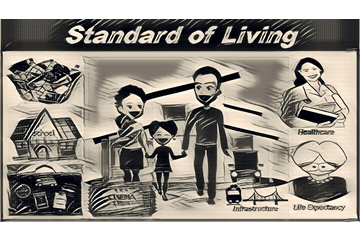Grade 2 Lesson 1: Standard of Living
Standard of living refers to the #quality and #quantity of #goods and #services available to a specific group of people. It is generally measured by #income per person, although sometimes other measures may be used. Several #economic, #health and #socioeconomic factors impact the standard of living for e.g.,
- #GDP per #capita
- Total leisure time enjoyed each year
- Access to #healthcare services
- Access to #education
- #Lifeexpectancy
- Public #safety
- #Literacyrates
and many more...
It is important to understand the difference between Standard of living and #Cost of #living. The #costofliving reflects how much #money individuals require to live. Specifically, how much they need to buy their groceries, clothing, gasoline, and other basic survival items. A country’s standard of living tells us how well or badly its #citizens live.
Standard of living vs. #Quality of #life
It is important to understand that the standard of living is different from the #qualityoflife. Standard of living doesn’t measure non-material characteristics, such as #relationships, #freedom, and #satisfaction. These characteristics are part of the quality of life.
Note that there is no #universal, fixed definition of Standard of Living, Cost of Living, and Quality of Life, and the 3 terms can often be used interchangeably.

#financialliteracymatters #kids #education